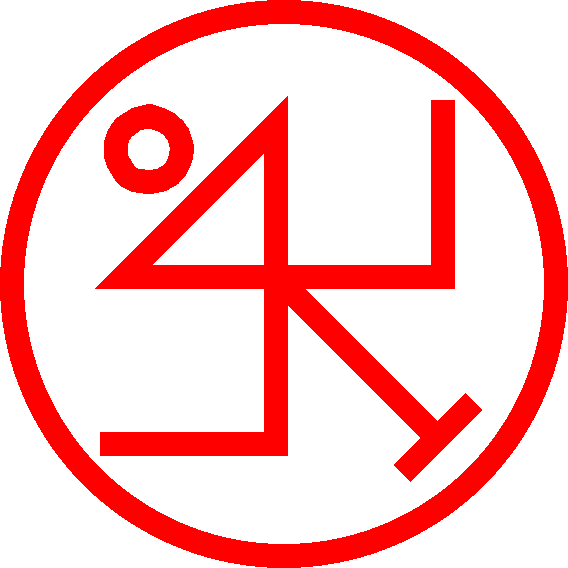An Esperanto translation of this essay is planned when time permits.
For many students of Qabalah in general, and Thelemites in particular, one question has never been satisfactorily answered: What are the values of the letters of the English alphabet?
There simply is no English Qabalah; or rather, the language as generally used does not provide one. Whereas classical Greek and Hebrew used the letters of their alphabet to represent numbers, English uses the Hindu-Arabic numerals, which are not letters. So it is up to the judgement of the individual student to devise, or select, a system which works for him.
Liber AL vel Legis mentions the problem in Chapter II:
II:55. Thou shalt obtain the order & value of the English Alphabet; thou shalt find new symbols to attribute them unto.
Unfortunately, the Book does not tell us anything further about this “order & value”, at least not explicitly. However, there is a well-known “puzzle” later in the same chapter:
II:76: 4 6 3 8 A B K 2 4 A L G M O R 3 Y X 24 89 R P S T O V A L. What meaneth this, o prophet? Thou knowest not; nor shalt thou know ever. There cometh one to follow thee: he shall expound it. But remember, o chosen one, to be me; to follow the love of Nu in the star-lit heaven; to look forth upon men, to tell them this glad word.
The rest of this essay presents just one possible system for calculating Gematric values for English words. Since it was devised, the system has produced many interesting results.
The table of values and its derivation
Frater Achad, with whom the author has always felt a particular identification, demonstrated in his Liber 31 the relevance of AL (אל in Hebrew, with the value 31), to understanding mysteries in Liber AL (which name itself reflects his work; Crowley had originally labeled it Liber L, but altered this based on Achad’s discoveries).
Therefore, we took 31 as the numerical Key to the English Alphabet. We begin with “A” and assign it the value 1. From there, we count down 31 letters. Since there are only 26 letters in the alphabet, we “wrap around” after “Z”, back to “A”. We finally stop at “F”, which we number as 2.
Repeating the count, we come to “K”, which we assign the value 3. This process is repeated until we have the entire alphabet numbered as follows:
| A | 1 | B | 22 | C | 17 | ||||
| D | 12 | E | 7 | F | 2 | G | 23 | H | 18 |
| I | 13 | J | 8 | K | 3 | L | 24 | M | 19 |
| N | 14 | O | 9 | P | 4 | Q | 25 | R | 20 |
| S | 15 | T | 10 | U | 5 | V | 26 | W | 21 |
| X | 16 | Y | 11 | Z | 6 |
This concludes the derivation of the EQ31 values.
A few interesting correspondences
Modern Egyptological names of the Gods
The present author has some experience with Egyptology and is often bothered by the antiquated spellings of the names, which reflect an 1890s understanding of Egyptian. While we should never disregard the spellings given in Liber AL itself, we might look at modern Egyptology for further insights.
“Ra-Hoor-Khuit” is “Ra-Horakhty”, “Ra [who is] Horus of the Two Horizons”. By EQ31, “Ra-Horakhty” = 111, a number which represents Unity (being Hebrew אלף Aleph). We may recall that the god is described as “a unity which includes and heads all things” (Crowley, Magick in Theory and Practice, Chapter 0). 111 is also the number of the Angel of the Sun (Nakhiel), appropriately. And perhaps most interesting of all, “Liber AL” itself = 111.
The number 93
“Babalon” = 93, the number of Thelema. Interestingly enough, 93 also equals “Christ”. This value is also that of the word “HRILIU”, used by Crowley to denote the sound made by the Priest and Priestess at the climax of the Gnostic Mass (Liber XV).
Liber B vel Magi
Verse 4 of Liber B vel Magi reads: “He is the First and the Last. How shall He cease to number Himself?” This verse adds to 666, the number of the Beast, with which Crowley identified himself.
Conclusion
This short exposition of the EQ31 system should elucidate a method for deriving an “English Qabalah”, and hopefully will also encourage usage of the 31 system itself. Research into EQ31 is ongoing; many hundreds of EQ31 hits, both individual words and full phrases and verses, can be found in my Gematria Calculator and Database.
